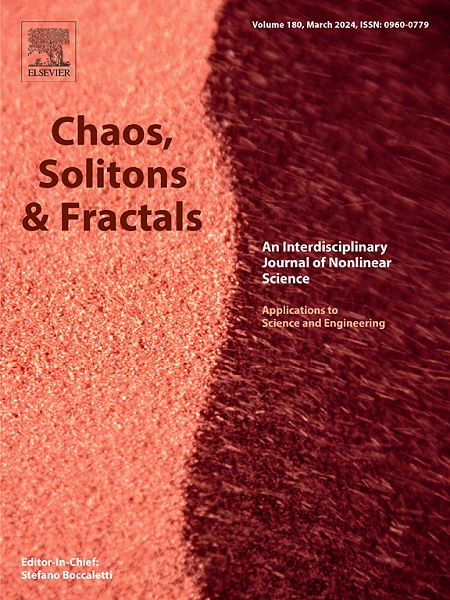等离子体物理和流体动力学中(2+1)维变系数Sawada-Kotera方程的状态转换机制
IF 5.3
1区 数学
Q1 MATHEMATICS, INTERDISCIPLINARY APPLICATIONS
引用次数: 0
摘要
本文研究了(2+1)维变系数Sawada-Kotera方程中的线性和弯曲变换非线性波,为等离子体物理和流体动力学的实验设计提供了有价值的理论见解。通过特征线分析和状态跃迁条件,对各种非均匀参数下的一般变换波进行了调制。结果表明,所选择的非均匀参数对转换波的隔离和振荡特性影响最小。此外,我们在(x-t)平面上给出了一系列具有相同非均匀系数的s型扭曲变换波,对应于不同的波数比,强调了波数比对局域性和振荡性质的显著影响。此外,还报道了一种新型的弯曲m形变换波,其特征是初始相交然后是平行构型。我们的研究结果表明,波数比在扭曲变形波的动态特性中起着至关重要的作用,包括它们的形状、速度和其他特性。本文章由计算机程序翻译,如有差异,请以英文原文为准。
State-transition mechanisms for (2+1)-dimensional Sawada-Kotera equation with the variable coefficients in plasma physics and fluid dynamics
In this paper, we investigate the linear and tortuous transformed nonlinear waves in the (2+1)-dimensional Sawada-Kotera equation with variable coefficients, which may provide valuable theoretical insights for experimental design in plasma physics and fluid dynamics. Through characteristic line analysis and state transition conditions, the general transformed waves under various inhomogeneous parameters are modulated. The results demonstrate that the selected inhomogeneous parameters have minimal impact on the isolation and oscillatory characteristics of the transformed waves. Furthermore, we present a series of S-type tortuous transformed waves with identical inhomogeneous coefficients corresponding to different wave number ratios in the (-) plane, highlighting that the wave number ratio significantly influences the locality and oscillatory nature. Additionally, a novel type of tortuous M-shaped transformed wave, characterized by an initial intersection followed by a parallel configuration, is also reported. Our findings indicate that the wave number ratio plays a crucial role in shaping the dynamic characteristics of tortuous transformed waves, including their shape, velocity, and other properties.
求助全文
通过发布文献求助,成功后即可免费获取论文全文。
去求助
来源期刊

Chaos Solitons & Fractals
物理-数学跨学科应用
CiteScore
13.20
自引率
10.30%
发文量
1087
审稿时长
9 months
期刊介绍:
Chaos, Solitons & Fractals strives to establish itself as a premier journal in the interdisciplinary realm of Nonlinear Science, Non-equilibrium, and Complex Phenomena. It welcomes submissions covering a broad spectrum of topics within this field, including dynamics, non-equilibrium processes in physics, chemistry, and geophysics, complex matter and networks, mathematical models, computational biology, applications to quantum and mesoscopic phenomena, fluctuations and random processes, self-organization, and social phenomena.
 求助内容:
求助内容: 应助结果提醒方式:
应助结果提醒方式:


